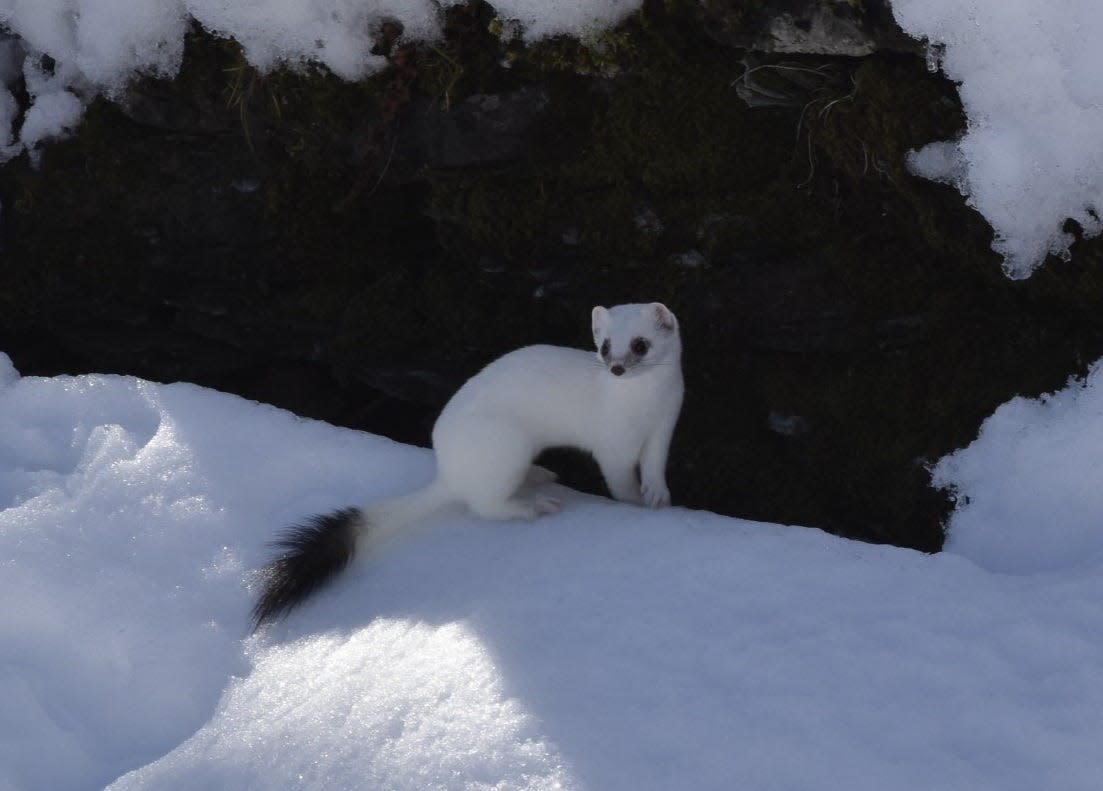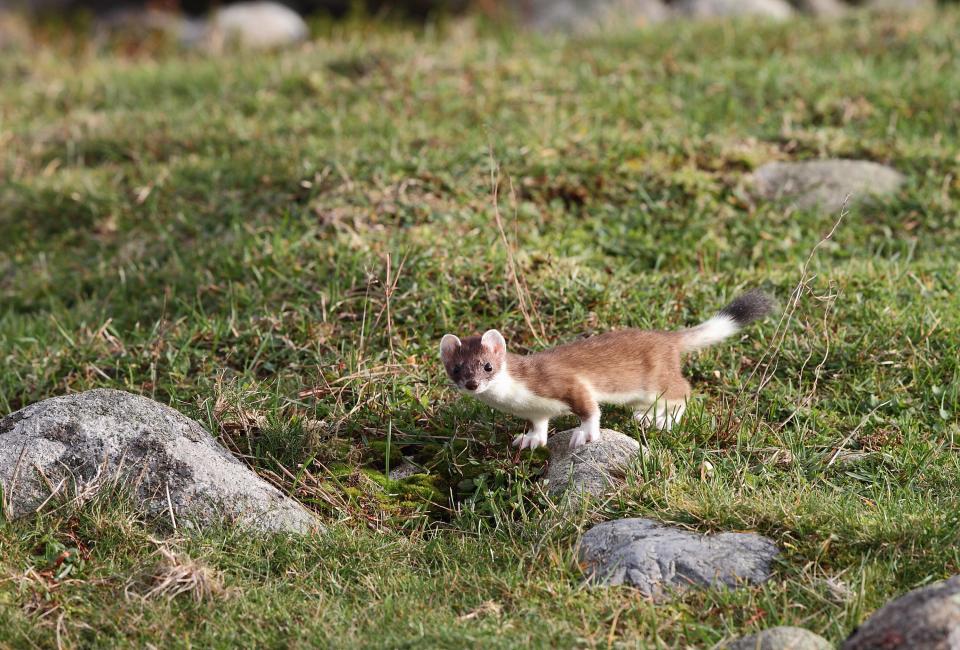How do weasels avoid predators? Secret may be on their tails: Nature News

I spent the weekend up in the White Mountains participating in volunteer naturalist training for the Appalachian Mountain Club. I love these kinds of events. Every time I get together with other naturalists, I learn new things.
One of my favorite new fun facts was about the short-tailed weasel (Mustela erminea). This is a common weasel that has become something of a Holy Grail for me: I want to see one in the wild, but I have not. I have found their tracks in the snow around my house, so I know they are here and am waiting for that magical moment when one pops out of the wood pile or lopes across the field next to my house on a cold winter's day (as long as it isn’t carrying off one of my chickens).
As we were taking a short nature walk up through the snow at Pinkham Notch our leader, Nancy Ritger, director of interpretive programs for the AMC, was discussing how different animals adapt to winter. To illustrate, she dug around in her pack and pulled out two animal skins — the summer and winter pelts of a short-tailed weasel. (I can’t wait to lead a walk and do this too!) I already knew this weasel changed fur color from brown and white to all white (except for a black tip on the end of their tail) in winter, as camouflage against the snow. But Nancy asked why keep the black tip, wouldn’t this interfere with the camouflage?

This question was asked, and then answered,in “Evolution of Black-Tipped Tails in Weasels: Predator Confusion," a paper published in The American Naturalist back in 1982 by Roger A. Powell. Powell was curious about why both short- and long-tailed weasels have black tail tips but their smaller cousin, the least weasel does not. Powell hypothesized the black tail tips must somehow help avoid predation. Even though weasels are ferocious predators they, in turn, fall prey to hawks, owls, fishers, foxes and other larger predators. So, with the help of some trained red-tailed hawks and weasel-sized strips of artificial white fur, some with black spots, some without, which were dragged along a white-painted roof, Powell recorded success rates of strikes by the hawks.
Powell found the hawks had less success catching short- and long-tailed weasel models when they had a black spot on their tail. He writes “observers occasionally noted hawks attempted to grasp the tail of the long-tailed, tail-spot morph but were unable to hold the tail because of poor dexterity and tail thinness; or hawks appeared to check their attack and miss at the last moment as though they had been surprised by some aspect of the weasel model” suggesting the black tail tip was serving as a distraction to the would-be predator. Even though these weasels turn white in winter, their coat color doesn’t always match the snow surface and they can be quite visible to predators, especially while running. By whipping their tails back and forth, the weasels draw attention away from their body.
But what about the smaller least weasels? Why don’t they have a black spot? In Powell’s experiment the all-white least weasel models were more likely to escape red-tailed hawks than ones with black spots on their tails. He concluded this had to do with tail length. The least weasels have short tails, a spot placed on the short tail of a small model was close enough to the body to be within talon reach.
Of course Nancy didn’t go into all this during her nature walk, but learning this little nugget about weasel adaptations inspired me to dig deeper when I got home. This winter I will not just keep my eyes peeled for a fleeting glimpse of a weasel in its winter whites but will also watch for that dancing black-tipped tail.

Susan Pike, a researcher and an environmental sciences and biology teacher at Dover High School, welcomes your ideas for future column topics. Send your photos and observations to spike3116@gmail.com. Read more of her Nature News columns online at Seacoastonline.com and pikes-hikes.com and follow her on Instagram @pikeshikes.
This article originally appeared on Portsmouth Herald: How do weasels avoid predators? Secret may be on tails: Nature News

